DM168
Up for sale: Pierre Cardin’s otherworldly holiday home
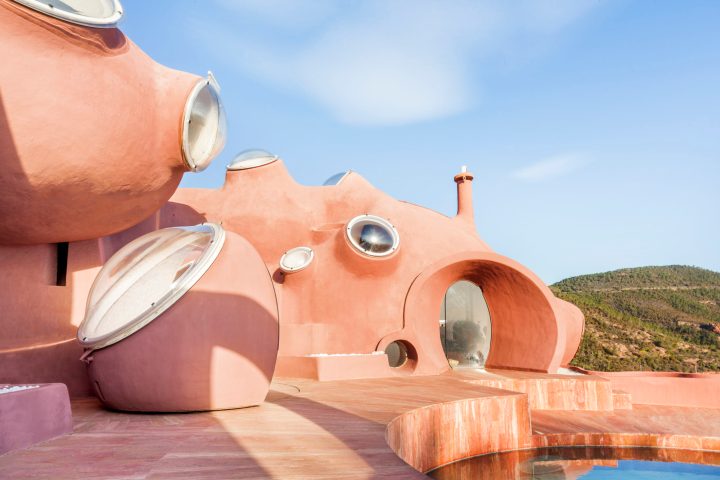
In 1992, French couturier Pierre Cardin, who passed away late last year, bought a large dusty pink house located on the slopes of the Estérel mountains in the South of France. Dubbed ‘The Bubble Palace’, it was created by anti-conformist architect and ‘habitologist’, Antti Lovag.
Perched on the slopes of the red rocky mountains of the Estérel, in the village of Théoule-sur-Mer, a village on the French Riviera of about 1,500 inhabitants, ‘le Palais Bulles’ aka the Bubble Palace stands — its pink curvaceous rooms surrounded by maritime pines and palm trees, with panoramic views of the Mediterranean Sea.
The house is for sale – and has been for quite a while – for a rumoured whopping €350 million (about R6.2 billion), according to the Smith Journal – although the real estate agency in charge of selling the property listed it under “price upon request”. The property comprises 1,200 square metres of rooms shaped in the form of bubbles, water ponds and waterfalls, an infinity pool, and even a 500-person open-air amphitheatre, all atop of over 8,500 square metres of land.
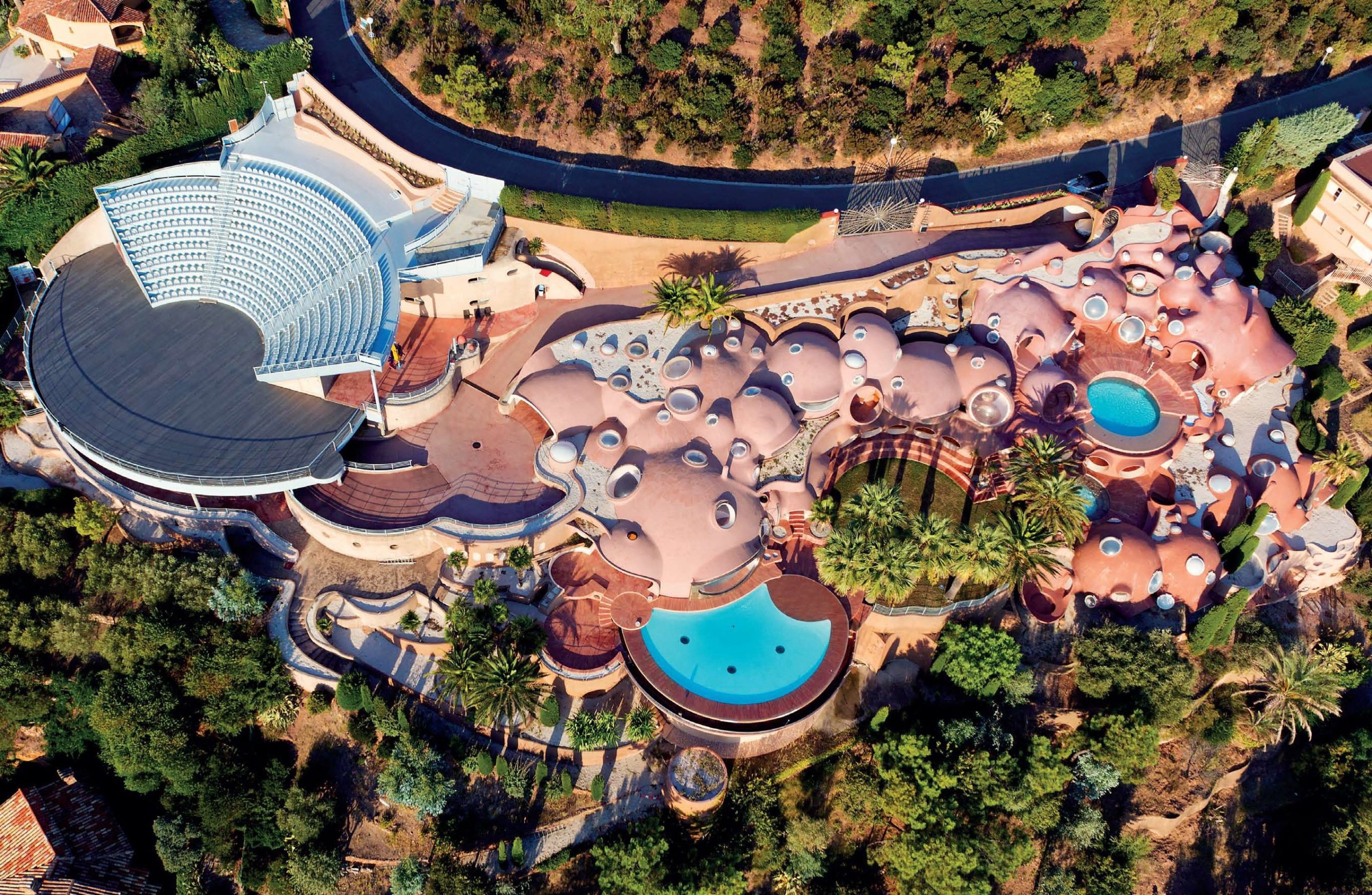
Palais Bulle (©Photo Remy Fay, courtesy of Archives Pierre Cardin)

Palais Bulle (©Photo Remy Fay, courtesy of Archives Pierre Cardin)

Palais Bulle (©Photo Louis-Philippe Breydel, courtesy of Archives Pierre Cardin)
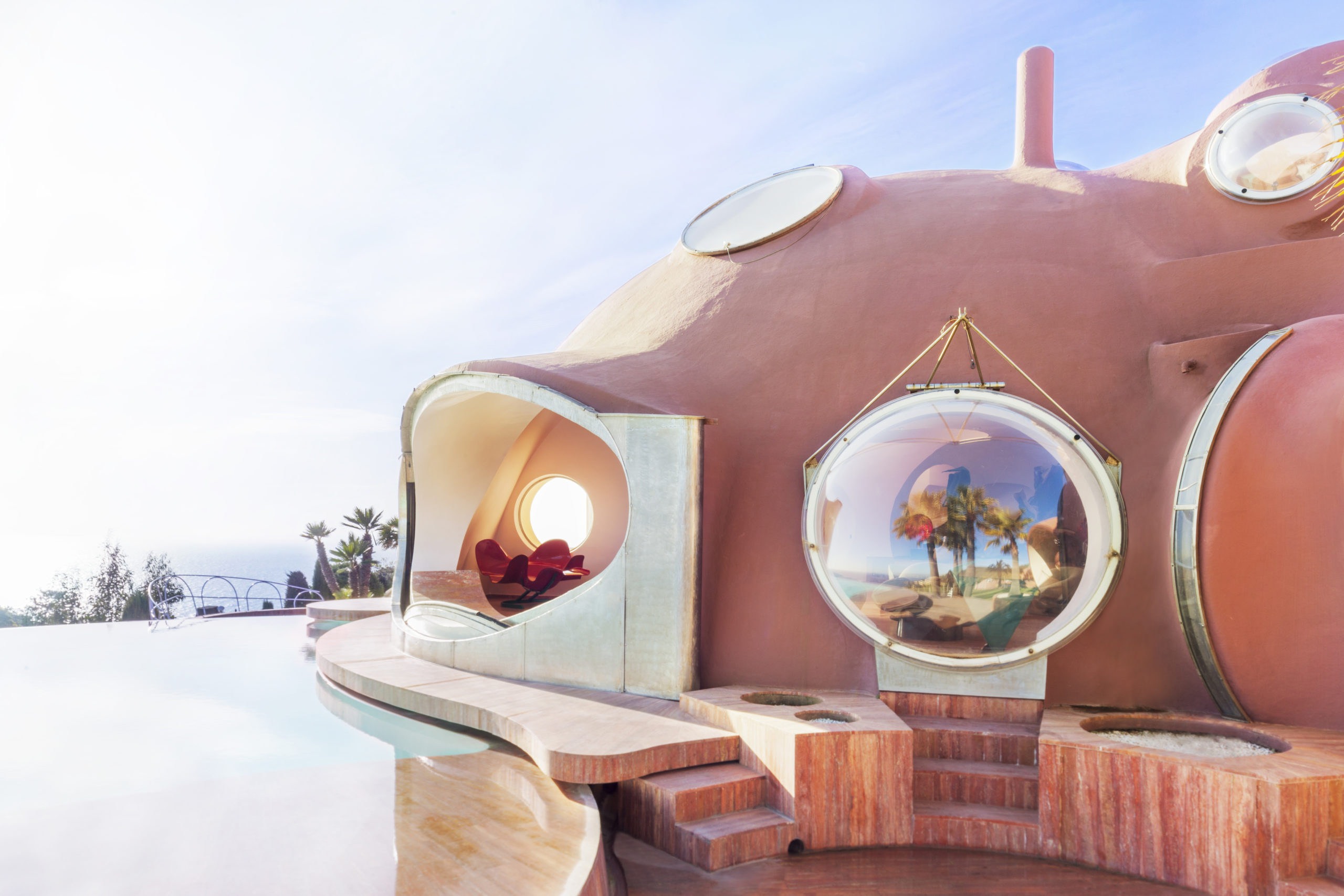
Palais Bulle (©Photo Cloe HARENT, courtesy of Archives Pierre Cardin)
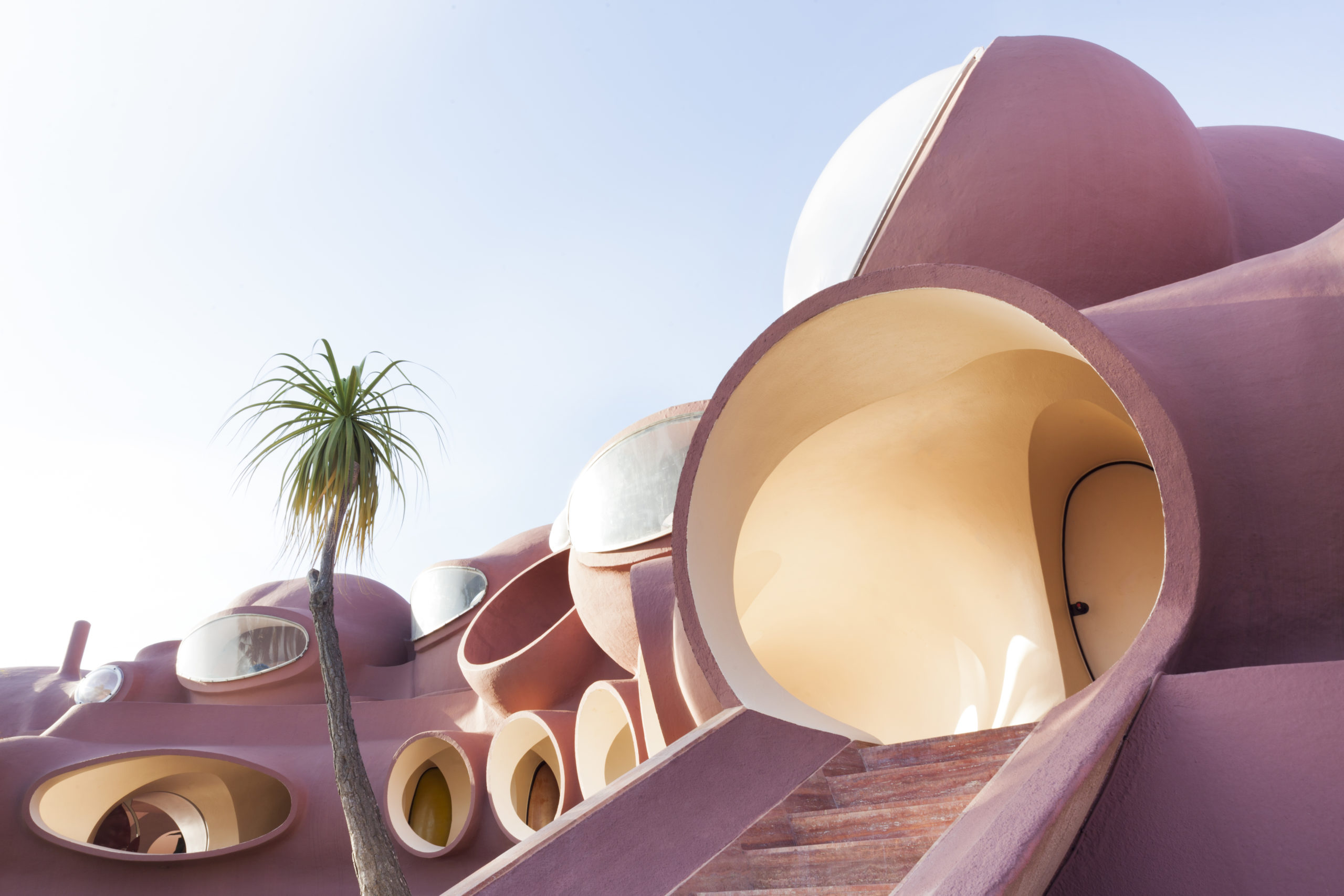
Palais Bulle (©Photo Cloe HARENT, courtesy of Archives Pierre Cardin)
Inside, it’s all curvatures, arches and portholes, infused with matching pop sixties-like décor: circular beds with plum duvets and matching pillows in silk forest green or petrol blue; here, an Eero Aarnio’s Ball Chair-inspired lounger; there, Lytegem lookalike lamps — orbs in bright metallic colours that pivot on their heads.
The home belonged to French-Italian couturier Pierre Cardin — an art enthusiast and collector, and frantic licensor of his eponymous brand (he once famously said, “I have a name, I have to take advantage of it”). He had bought it in 1992 as a holiday home and escape from Paris. It served as the perfect – and somehow impeccably fitting – environment to house his private fashion collections.
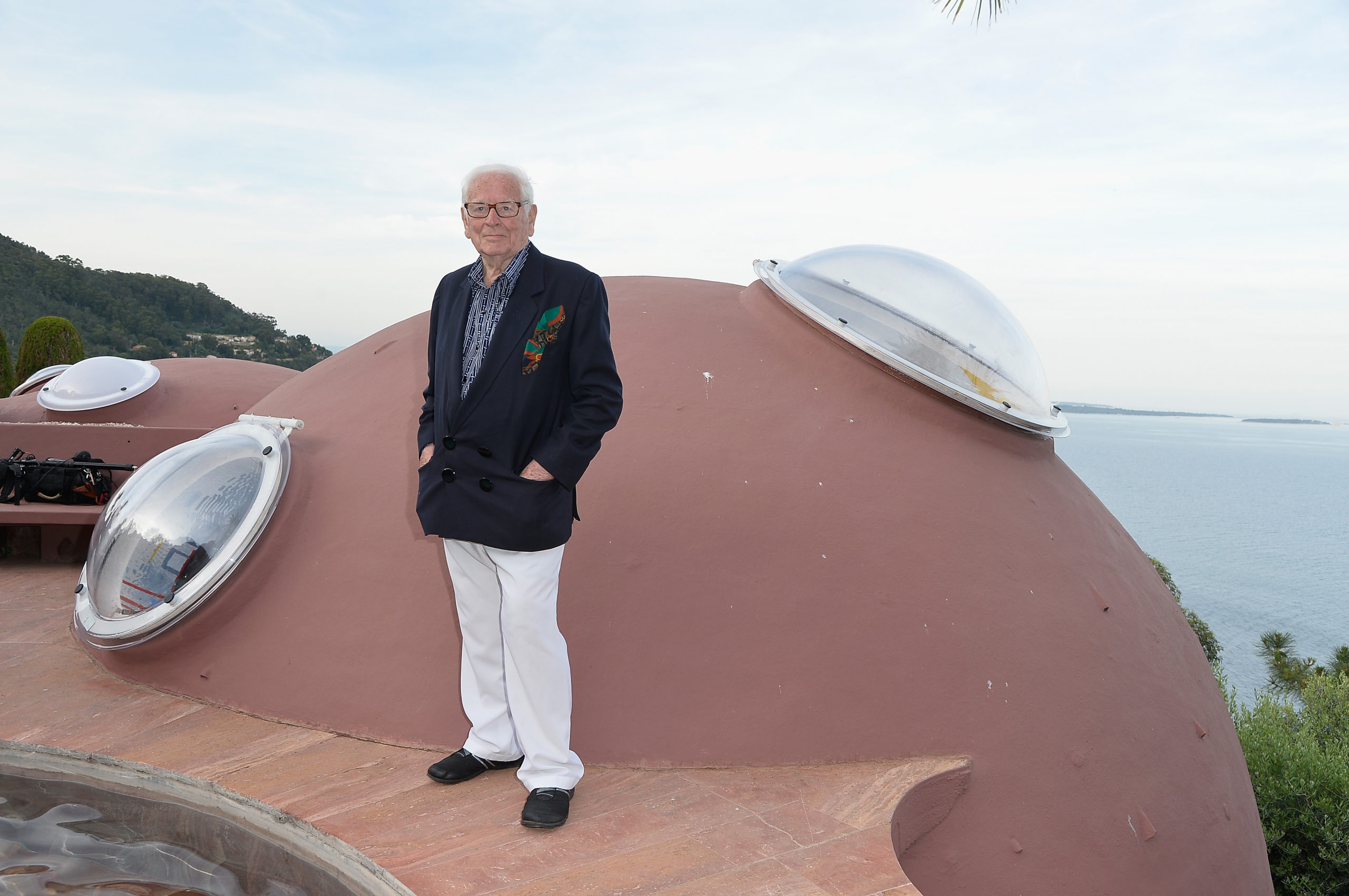
Pierre Cardin attends the Dior Croisiere 2016 at Palais Bulle on May 11, 2015 in Theoule sur Mer, France. (Photo by Pascal Le Segretain/Getty Images for Dior)
Cardin, who along with André Courrèges and Paco Rabanne, was considered a precursor of ‘la mode futuriste’ — a deliberate ultramodern style that contrasted with what was seen and created at the time. In 1954, Cardin designed the ‘robe bulle’, or bubble dress, couture that would blow up around the hips, like a balloon tied at the waist and closing on the calves. It was strange, different and the press loved it. The bubble dress launched his career as a couturier.
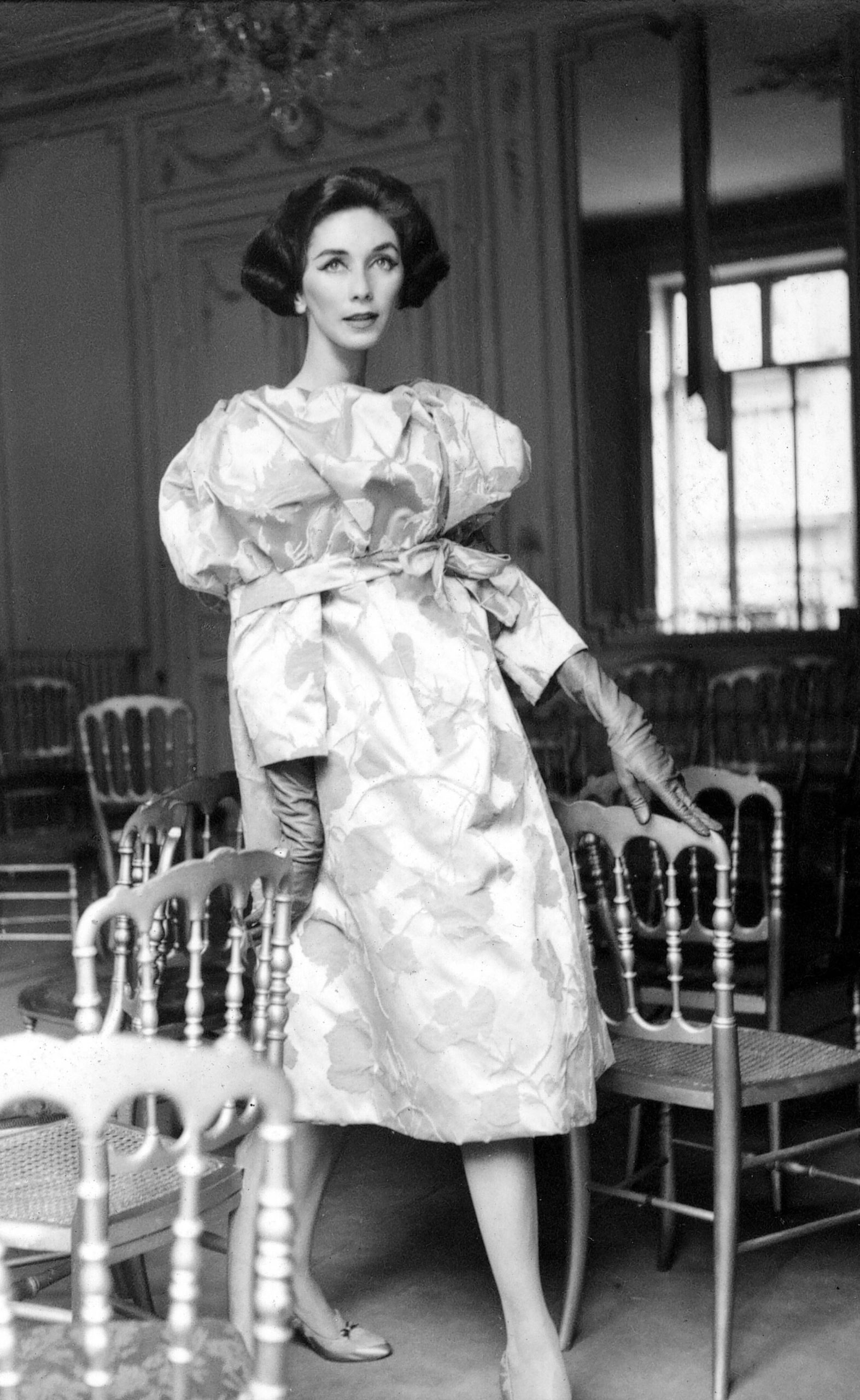
Dress by Pierre Cardin (Archives Pierre Cardin)
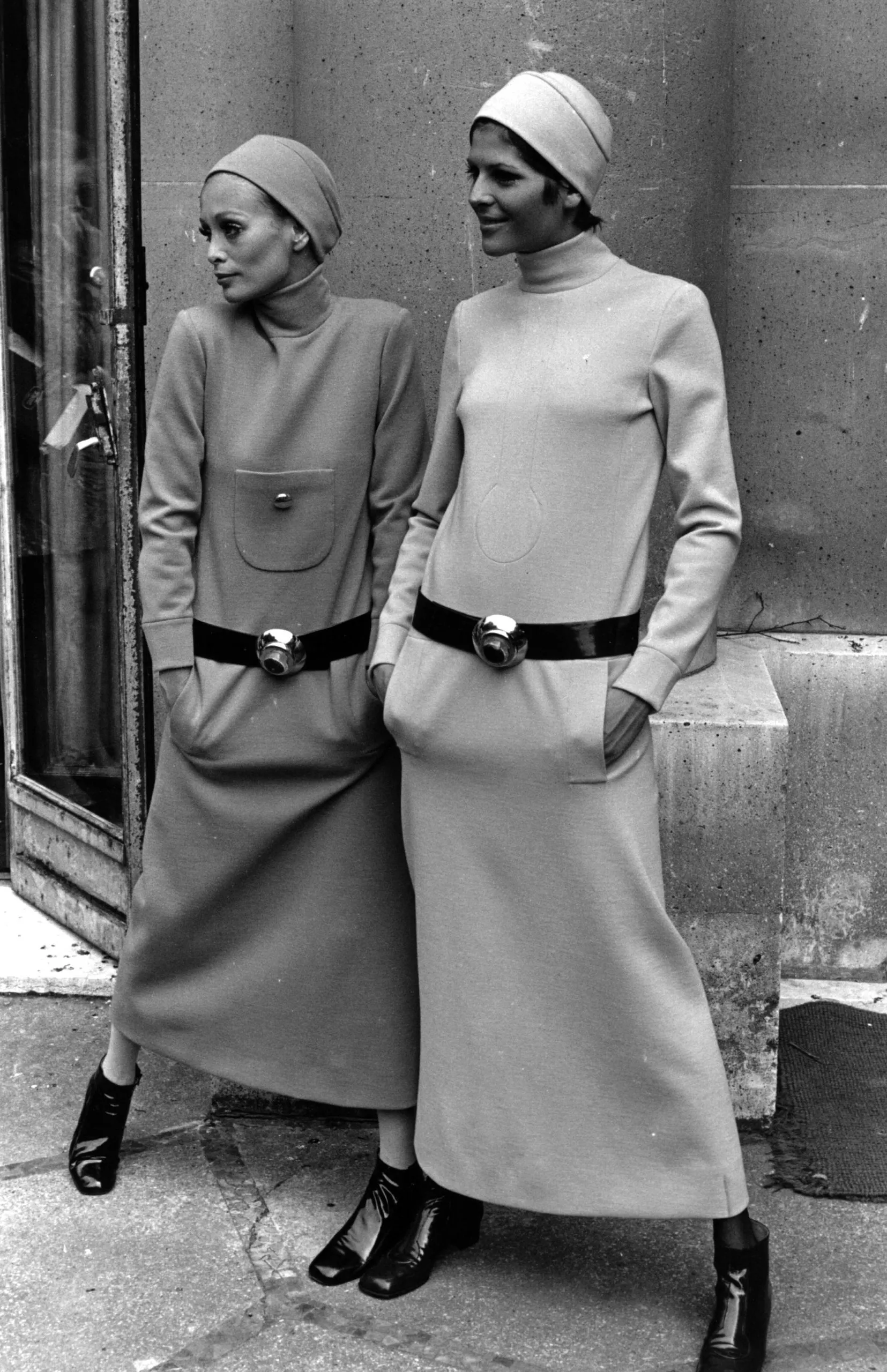
Two women model the Pierre Cardin fashions to be presented at the French Fashion Collection in April 1969. A long dress, long sleeves, high neck and no frills seems to be the fashion. (Photo by Express Newspapers/Getty Images)
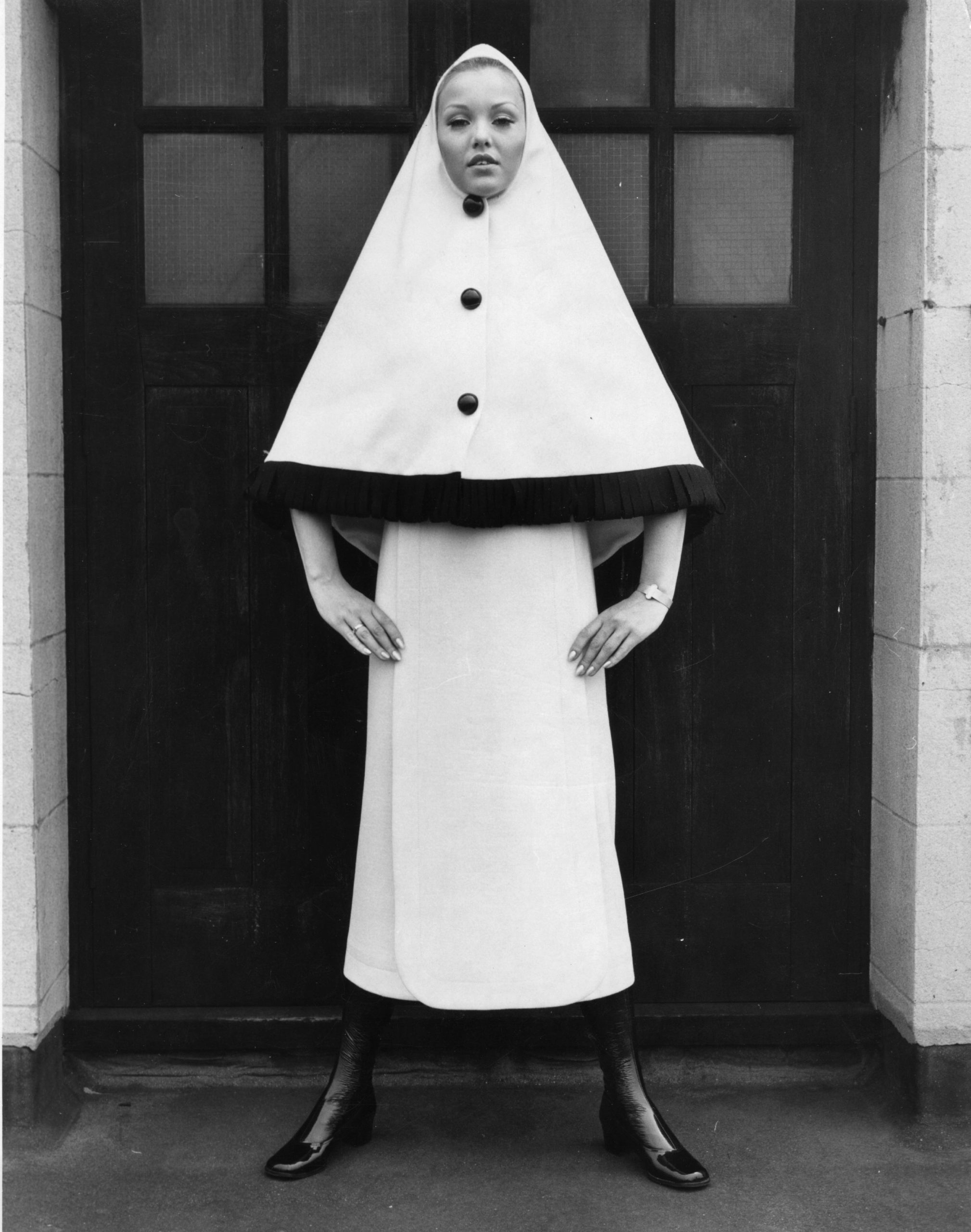
28th May 1970: Denise Cox modelling a Pierre Cardin designed woollen dress and cape during a fashion show at Dickens and Jones. (Photo by John Minihan/Evening Standard/Getty Images)
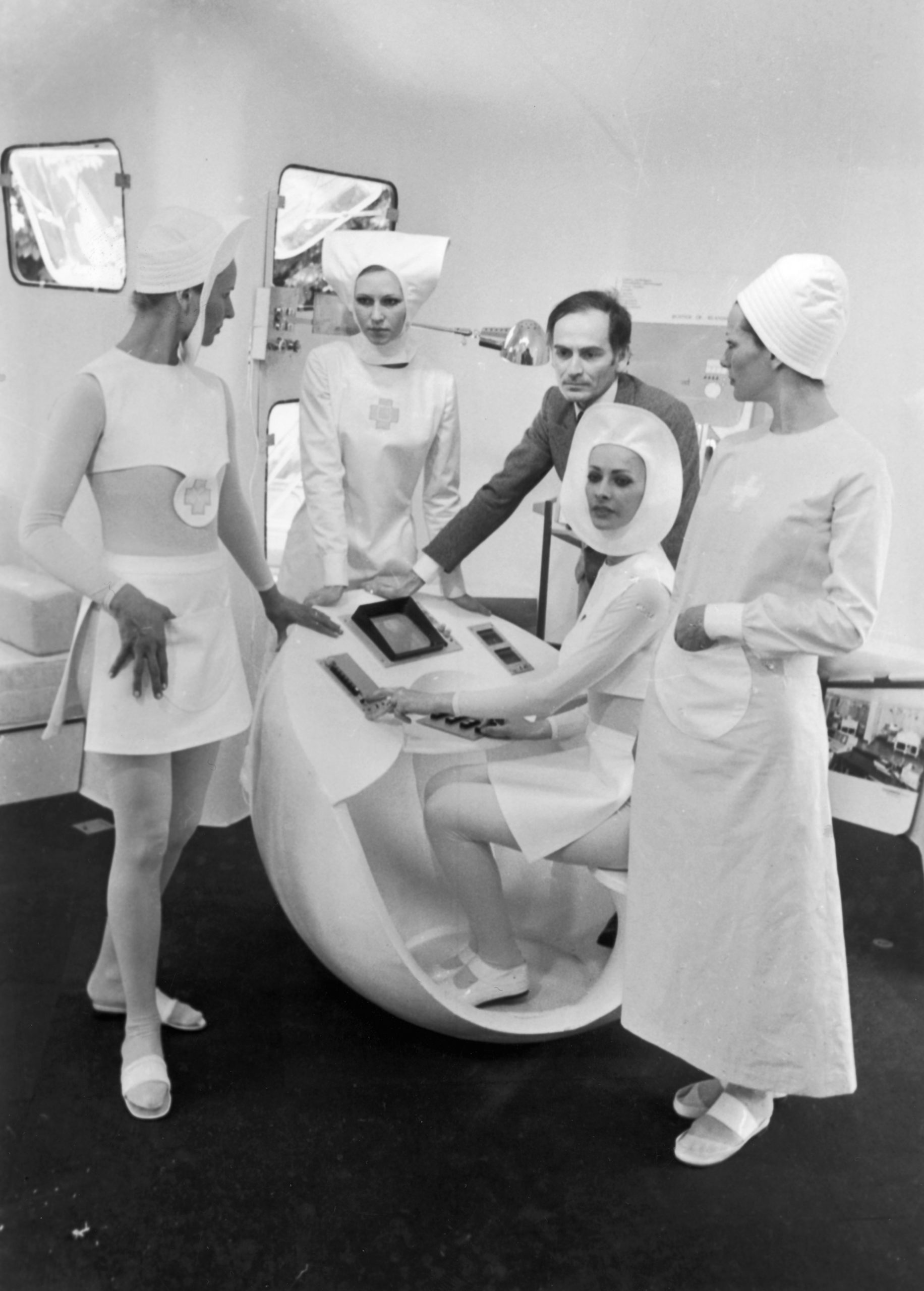
Four of the new uniforms for French nurses designed by couturier Pierre Cardin. (Photo by Keystone/Getty Images)
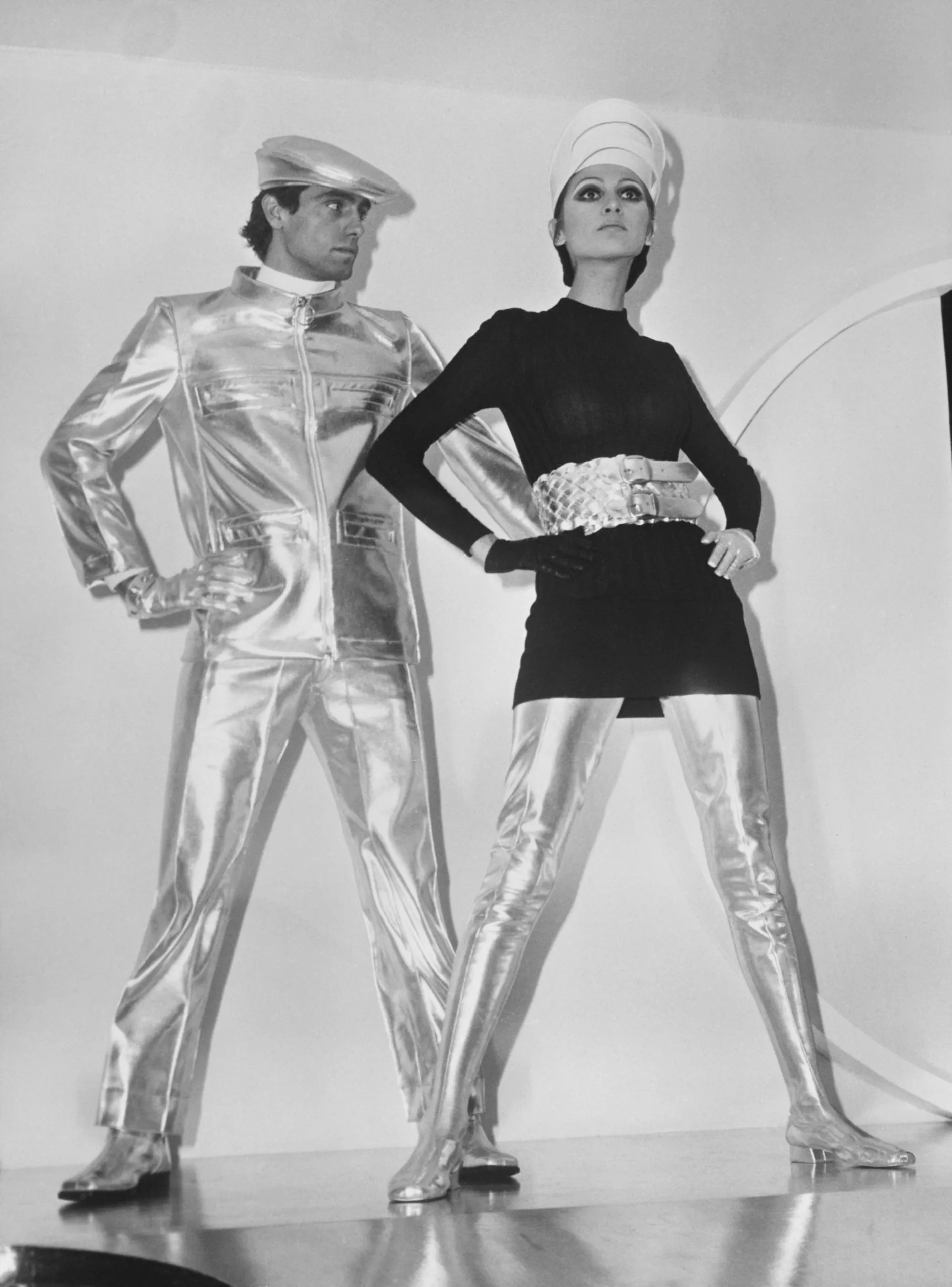
Space-age outfits in silver vinyl by Pierre Cardin, on display at Fashion Week in Paris, 26th January 1968. (Photo by Keystone/Hulton Archive/Getty Images)
In his book Palais Bulles of Pierre Cardin, published by Assouline, the couturier said, “From the start of my career, the circle has been a constant in my creations; I wanted to be promoting the unusual.”
Ironically, even though the Palais Bulle seems to be echoing Cardin’s design work, the house wasn’t his own creation. It was commissioned in 1975 by French industrialist Pierre Bernard and built by Hungarian architect Antti Lovag for completion in 1989.
Lovag, who had already constructed a ‘bubble’ house for fund manager Antoine Gaudet in 1968, was interested in the practical form, the shell and “a change in perspective” and challenged the usual linear and angular shapes in vogue in architecture at the time. Instead, the architect, who preferred to call himself a ‘habitologist’ (in charge of the habitat and not the structure), looked first at the landscape and nature of an environment before superimposing his ideas – in this case, half eggs-like structures moulded next to each other – on top of it.
Of his work, Lovag was quoted as saying, “I’ve always worked with adventurers who wanted something that didn’t exist,” adding: “These are my conditions:
“I don’t know how long it’s going to take, I don’t know what it will become and I don’t know how much it will cost.”
In a retrospective Maison Bernard video, Lovag is seen working (and living) on site, watching every step of the building process with the attention of a parent.
Maison Bernard – The Building Site from Maison Bernard on Vimeo.
He would build an “iron rebar network that enabled him to visualise the interior spaces and define the openings to the sky, the sea or landscapes.” Then he would pour a concrete cast over the frame, creating houses that merged comfortably with the aesthetics of their environments — extraordinary and unpredictable designs emerging from otherwise uniform construction.
Maison Bernard – The Approach (Subtitled version) from Maison Bernard on Vimeo.
The result was a house like a cocoon — an exaggerated beehive with alcoves and caves to escape and disappear into. Cardin fell in love with the place.
From parties to fashion shows to movie sets, the house became not only a refuge for the designer but also a popular backdrop for glamour shoots. But it proved expensive to maintain and, in the end, not easy to live in.
In a February 2021 article for AD magazine, Hugh Wade-Jones, managing director of Enness Global Mortgages, explained that “The Palais Bulles is undoubtedly an iconic piece of real estate; however, the predominant opinion is that the property is a bit of a white elephant. It’s architecturally incredible but largely impractical for residential living and would require a huge amount of work to remedy that.” Still, AD writer Nadja Sayej noted that “Cardin would rent it out to vacation groups for $33,200 a day (R490,000).”
Extravagant maintenance costs and unusual homes seemed to be in Cardin’s caractère; nine years after he bought the Bubble Palace, he would also purchase the 15th-century Château de Lacoste, originally the home of the infamous libertine, the Marquis de Sade, in the South of France. When Cardin bought the castle, it was a ruin with an open-air amphitheatre and a view over the Lubéron valley and the village of B0nnieux. Now, every year, it boasts a theatre, dance and opera festival and visitors can explore Château de Lacoste’s grounds in the summer months.
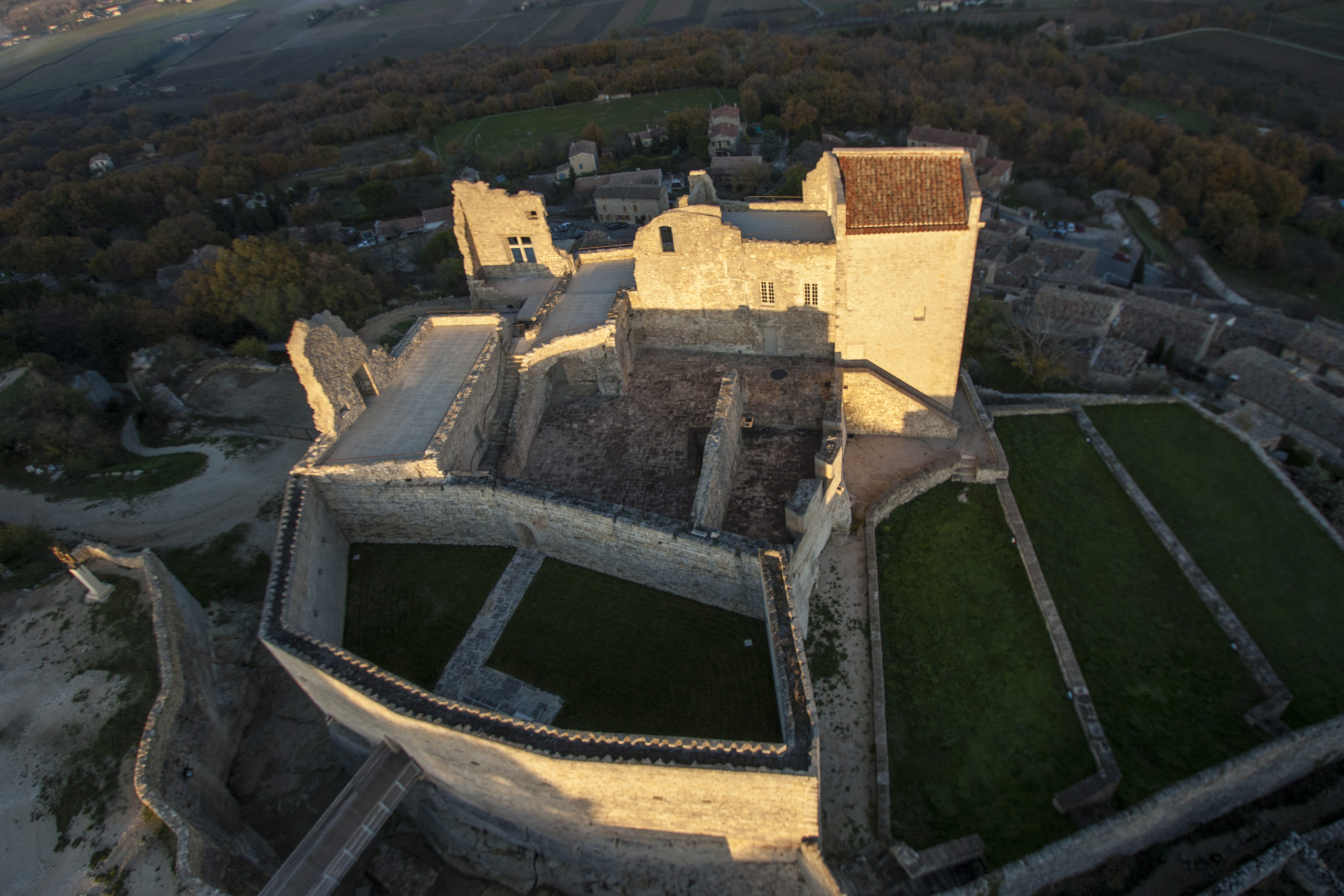
Château Lacoste (Courtesy of Archives Pierre Cardin)
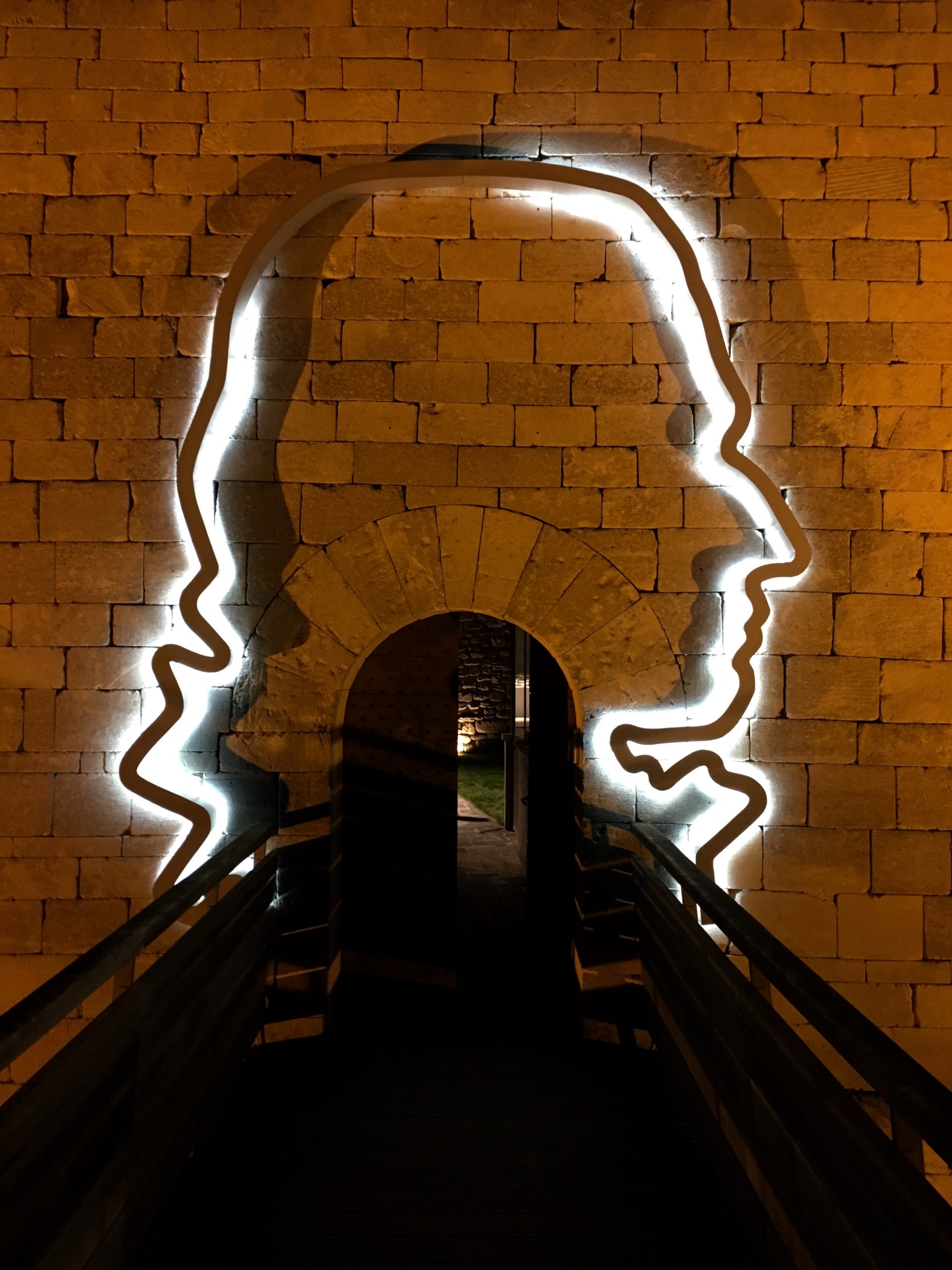
Château Lacoste (Photo courtesy of Archives Pierre Cardin)
“The dress is a vase which the body follows. My clothes are like modules in which bodies move,” said Cardin of his couture designs. His homes bore a similar style – modules in which he moved, at once original, modern and visionary. DM/ ML


















 Become an Insider
Become an Insider
Comments - Please login in order to comment.